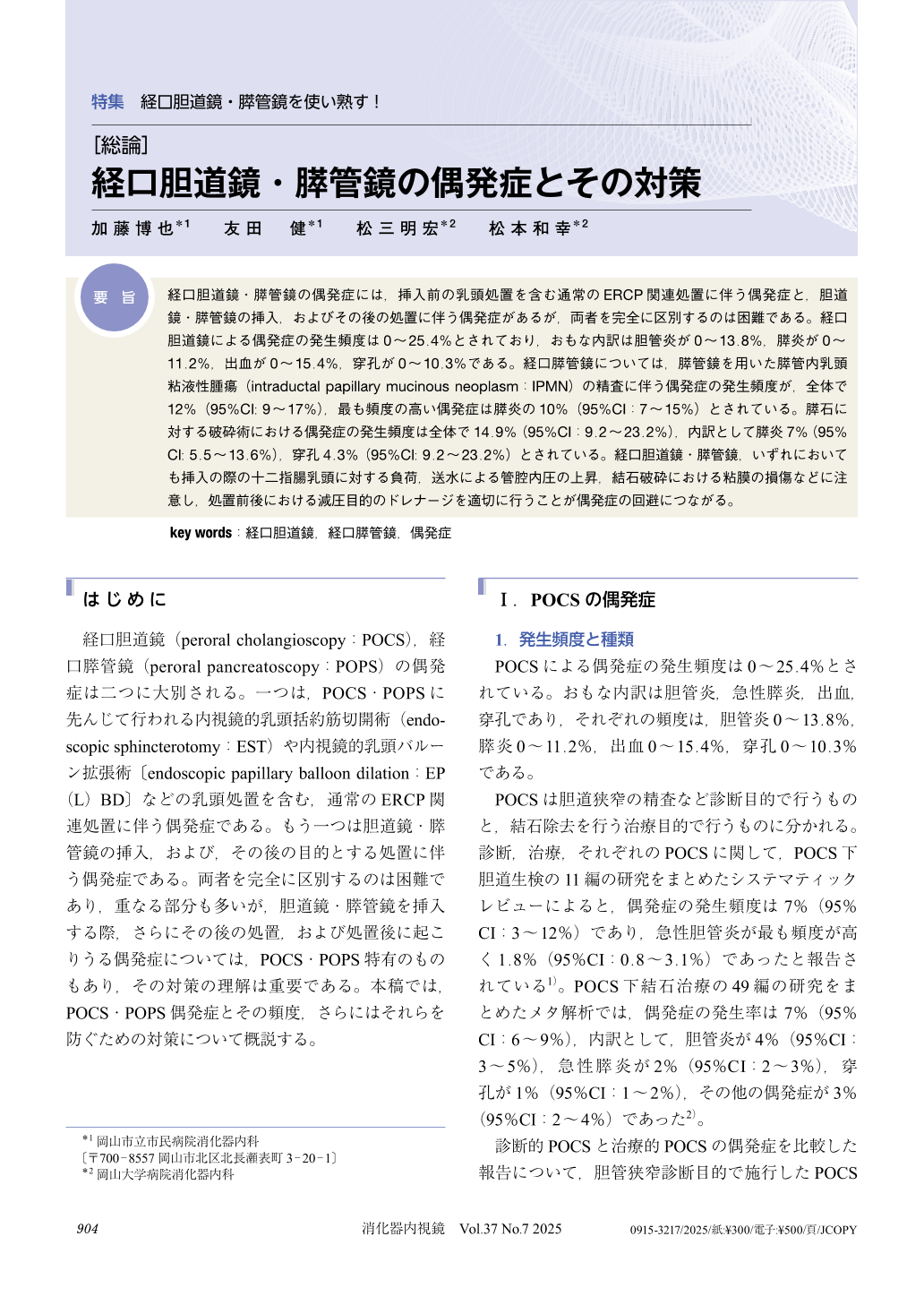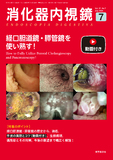Japanese
English
- 有料閲覧
- Abstract 文献概要
- 1ページ目 Look Inside
- 参考文献 Reference
要旨
経口胆道鏡・膵管鏡の偶発症には,挿入前の乳頭処置を含む通常のERCP関連処置に伴う偶発症と,胆道鏡・膵管鏡の挿入,およびその後の処置に伴う偶発症があるが,両者を完全に区別するのは困難である。経口胆道鏡による偶発症の発生頻度は0〜25.4%とされており,おもな内訳は胆管炎が0〜13.8%,膵炎が0〜11.2%,出血が0〜15.4%,穿孔が0〜10.3%である。経口膵管鏡については,膵管鏡を用いた膵管内乳頭粘液性腫瘍(intraductal papillary mucinous neoplasm:IPMN)の精査に伴う偶発症の発生頻度が,全体で12%(95%CI: 9〜17%),最も頻度の高い偶発症は膵炎の10%(95%CI:7〜15%)とされている。膵石に対する破砕術における偶発症の発生頻度は全体で14.9% (95%CI:9.2〜23.2%),内訳として膵炎7%(95%CI: 5.5〜13.6%),穿孔4.3% (95%CI: 9.2〜23.2%)とされている。経口胆道鏡・膵管鏡,いずれにおいても挿入の際の十二指腸乳頭に対する負荷,送水による管腔内圧の上昇,結石破砕における粘膜の損傷などに注意し,処置前後における減圧目的のドレナージを適切に行うことが偶発症の回避につながる。
Adverse events (AE) associated with peroral cholangioscopy and pancreatoscopy include those with routine ERCP-related procedures such as sphincterotomy prior to scope insertion, and those with insertion of the cholangoscope and pancreatoscope and subsequent procedures. It is difficult to completely distinguish between these AE. The overall frequency of AE with peroral cholangioscopy is 0-25.4%. Details of AE incidents and their frequencies are: cholangitis accounting for 0-13.8%, pancreatitis for 0-11.2%, hemorrhage for 0-15.4%, and perforation for 0-10.3%. The overall frequency of AE associated with peroral pancreatoscopy for IPMN is 12% (95%CI: 9-17%). Pancreatitis, which is the most common AE, occurred in 10% (95%CI: 7-15%) patients. The overall frequency of AE associated with pancreatic stone lithotripsy is 14.9% (95%CI: 9.2-23.2%), including pancreatitis in 7% of cases (95%CI: 5.5-13.6%) and perforation in 4.3% (95%CI: 9.2-23.2%). In both cholangioscopy and pancolangioscopy, it is important to pay attention to edema of the duodenal papilla due to aggressive scope insertion, increased internal pressure due to water infusion, and injury of the mucosa during lithotripsy. In addition, appropriate drainage for intraluminal decompression before and after the procedure is important in order to avoid any occurrence of AE.

© tokyo-igakusha.co.jp. All right reserved.


